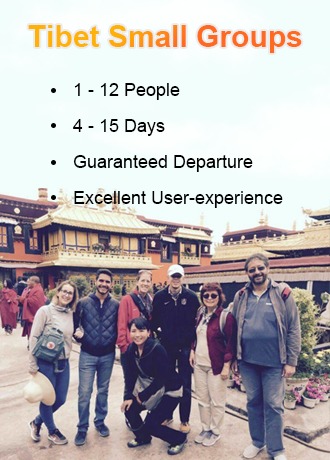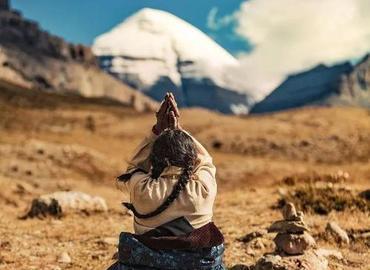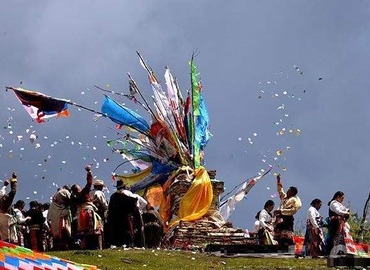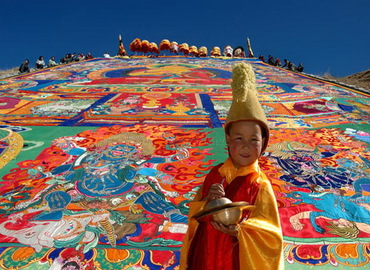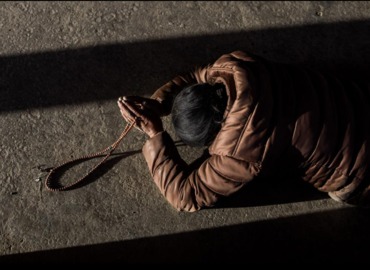Jowo Rinpoche: The Most Sacred Buddha Statue in Tibet
- by Catherine
- Last Updated: 2023-10-13
The most sacred, best preserved, and most worshipped Buddha statue of Buddhism in the world today is the statue of Venerable Jowo Sakyamuni enshrined in the center of the Shakyamuni Buddha Hall of the Jokhang Temple in Lhasa, Tibet. People respectfully call it Jowo Rinpoche. In Tibetan, "Jowo" means "supreme", and "Rinpoche" means "treasure". It is also a rare art treasure.
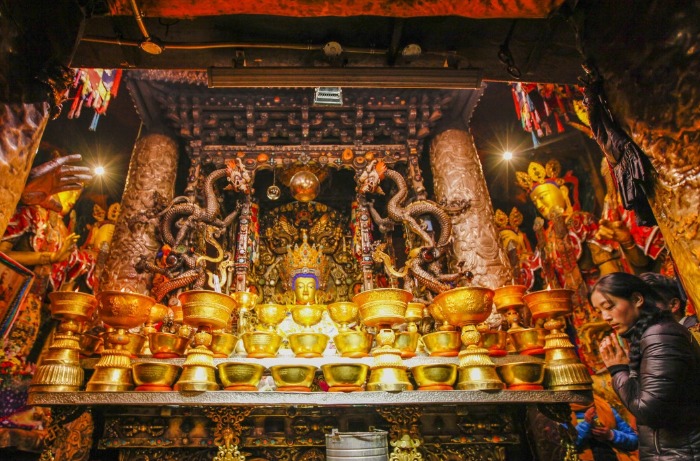
Who is Shakyamuni?
Shakyamuni (623 BC-543 BC) is the founder of Buddhism. He was a prince of Kapilavastu in the north of ancient India (in what is now Nepal), named Gautama Siddhartha. According to Buddhist scriptures, at the age of 19, when Gautama Buddha felt the suffering of birth, old age, sickness, and death, he abandoned the royal life and became a monk. At the age of 35, he attained enlightenment under the Bodhi tree and founded the Sangha, the earliest Buddhist community, then taught his teachings throughout the Ganges plain of northern and central India. At the age of 80, he attained Nirvana upon his death in Kushinagar. He was given the title Buddha Shakyamuni. Buddhism gradually divided into many schools in the later development.
What's Sakyamuni Buddha Statue like?
Housed in the central Buddha Hall, the seated Jowo Rinpoche is 1.5 meters high, and has a vivid shape and a peaceful expression, holding a bowl in the left hand and putting the right hand on the lap. With a benevolent and silent smile, he seems to be comforting all living beings with gentle words.
The Tibetan people set the Buddha Shakyamuni statue with many gems, such as turquoise, red coral, pearls, amber, jade beads, etc. The most striking is the three "nine-eye" Dzi beads mounted on the crown. After the largest renovation and expansion in history, in 1409, the founder of the Gelug school of Tibetan Buddhism, Tsongkhapa presented the crown of five Buddhas to the Buddha statue. Shakyamuni statue was damaged along with the Jokhang Temple during the Cultural Revolution, and both were later restored.
Why is Jowo Rinpoche the Most Sacred in Tibet?
The pilgrims of Tibetan Buddhism believe in Jowo Shakyamuni and regard it as the greatest spiritual belief. They admire it the most. Generally speaking, most temples enshrine Shakyamuni’s statues of all kinds. What is so special about this one? Not only because it has high value as a historical relic, but also because the sacred and rare origin feels like the presence of the Buddha.
When Shakyamuni was alive, his disciples asked craftsmen to make three statues for him, which were 8 years old, 12 years old, and 25 years old (or 30) respectively. With the guidance of his nanny, the statues are very much like the Buddha himself. After the statues were completed, they're consecrated and blessed by Shakyamuni himself.
Among the three statues, the gilt bronze statue of the 12-year-old is the noblest and most exquisite. It is said that anyone who sees the Buddha Shakyamuni statue will have all the merits of seeing, hearing, thinking, and touching, then be able to free himself from the three roots of suffering and achieve liberation from Samsara in the future.
Jowo Rinpoche is the reason why Jokhang Temple became the spiritual center, and it can even be said to be the reason why Lhasa became the capital city. "Lhasa" was named after this statue of Buddha, which means a place where gods and Buddhas reside. You can imagine how important the statue is.
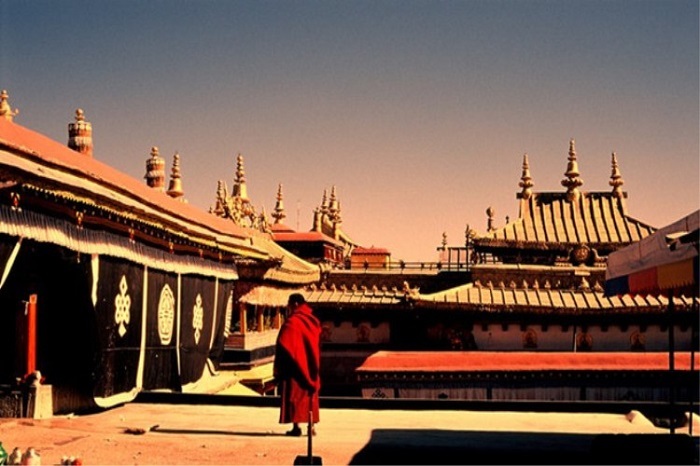
Tibetans think it is precious not only because of its historical value and cultural relic value, but the most important thing is that there is no difference between seeing this Buddha now and seeing the Buddha 2,500 years ago. In the heart of every devout Tibetan, there is the same wish to pray to Jowo Rinpoche, in order to seed the karma of liberation. Therefore you can see crowds of pilgrims worshiping every day around the Jokhang temple.
Devout Pilgrims and Jowo Shakyamuni
Jowo Rinpoche is the main god of the Jokhang Temple, the essence of Tibetan Buddhism, and the belief center of millions of Buddhist believers. People express their piety and admiration for him in various ways.
Every sacred day, Lhasa people will come to worship the Buddha of Jokhang Temple as usual. They circle around the statue of Shakyamuni Buddha, moving slowly. For centuries, pilgrims prostrate in front of the Jokhang Temple one after another, even the rough stone slabs have been rubbed smoothly like mirrors. Devotees offer butter for the ever-burning lamps, present Khata at the Shrine, or gild the Buddha statue with gold powder. In short, they dedicated all their respects to the Buddha.
Some very faithful pilgrims use a rare way to worship the Buddha. From all over Tibet, even from the Tibetan areas of Qinghai, Sichuan, and Gansu, thousands of miles away, the pilgrims prostrate to Lhasa all the way, as if measuring the land on the "roof of the world" with their bodies. In the end, they kneel down at the foot of the Buddha, leaning on his knee, and whisper prayers and wishes. This should be the happiest and most satisfying moment for Tibetan Buddhists.
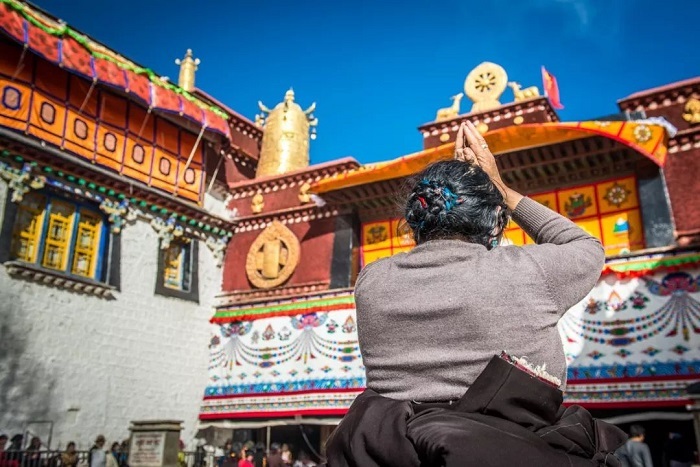
The Sakyamuni Buddha Statue History
There is a version about how Jowo Shakyamuni being able to come to Lhasa. The 25-year-old Buddha statue sank into the Indian Ocean due to religious wars in India. According to Tibetan literature, an Indian king of Magadha presented the 12-year-old Jowo statue to the Emporer Fu Jian (337–385) of Former Qin during the Chinese Sixteen Kingdoms period, in order to thank him for his assistance in defeating invaders and re-spreading Buddhism. When Songtsen Gampo married the Chinese princess Wencheng, Emperor Taizong (598-649) gave the statue to Princess Wencheng as a dowry. And Jowo Shakyamuni was carried to Tibet in 641 and later enshrined in the Jokhang Temple in 710. Since then, the Shakyamuni statue has shared glory and disgrace with Tibetan Buddhism.
During the Songtsen Gampo period, the construction of Jokhang Temple was undoubtedly a very grand project. The infrastructure construction alone took three years. After expansion several times throughout the ages, it reached the current scale. The old Barkhor Street was simply a pilgrimage road around the Jokhang Temple. When more people came to worship, hotels, restaurants, shops, etc. appeared one after another, and a bustling commercial center slowly formed. From this, a prosperous Lhasa city was formed.
The Nepalese Princess Bhrikuti carried the 8-year-old Sakyamuni Buddha Statue to Tibet too in the same historical period. It is now housed in the Ramoche Temple of Lhasa. However, it is not very complete due to the damage during the Cultural Revolution.
Email response within 0.5~24 hours.


